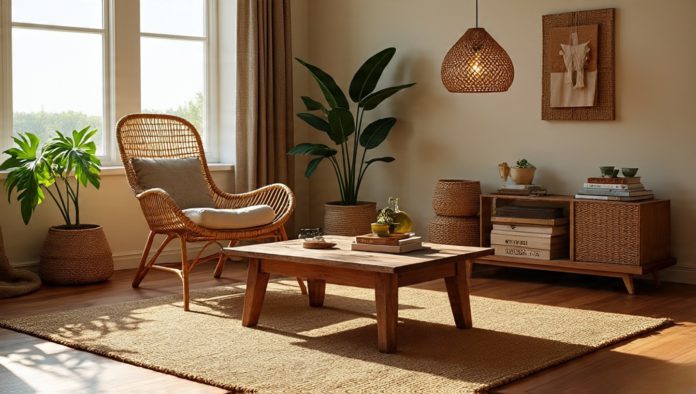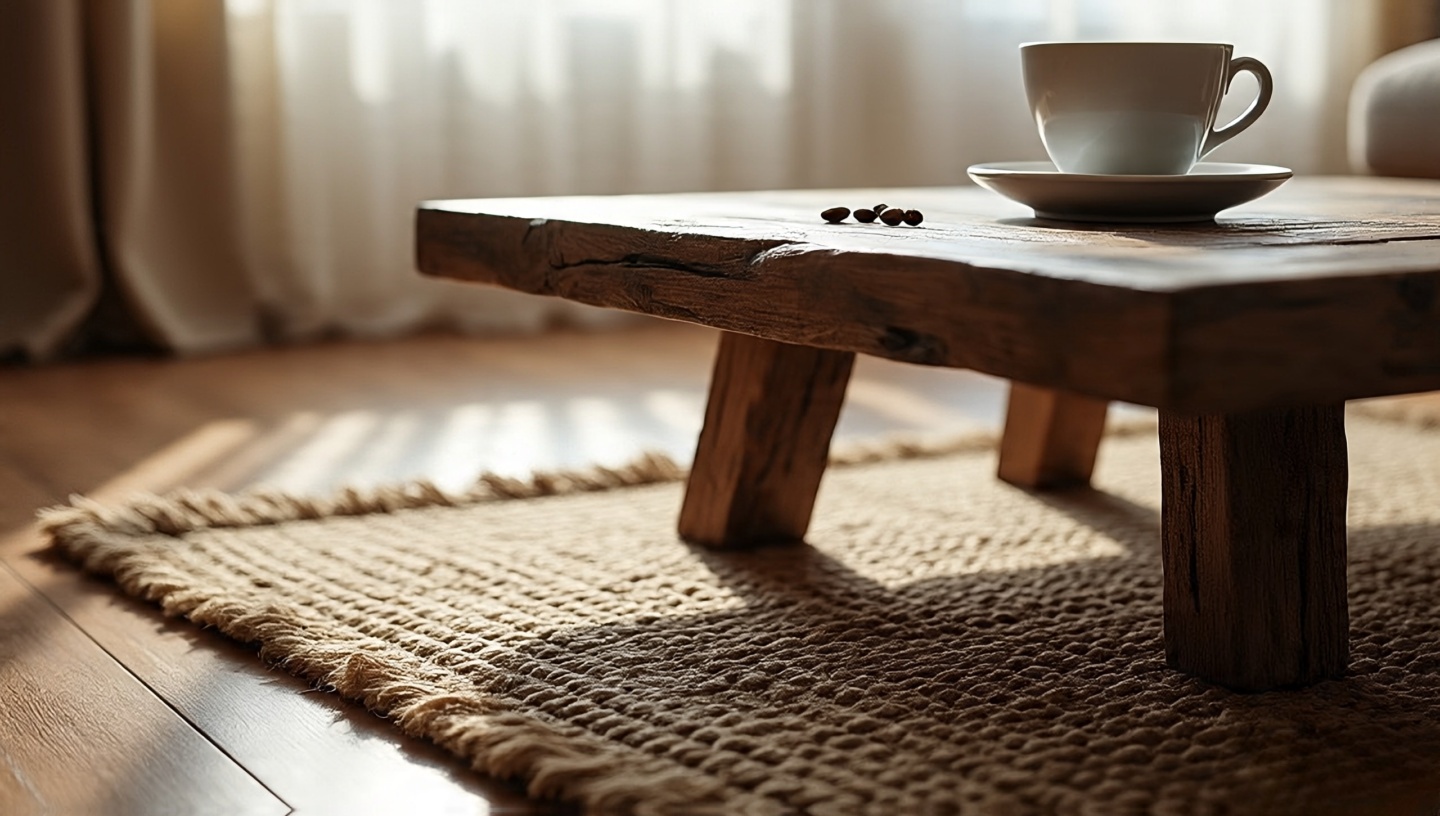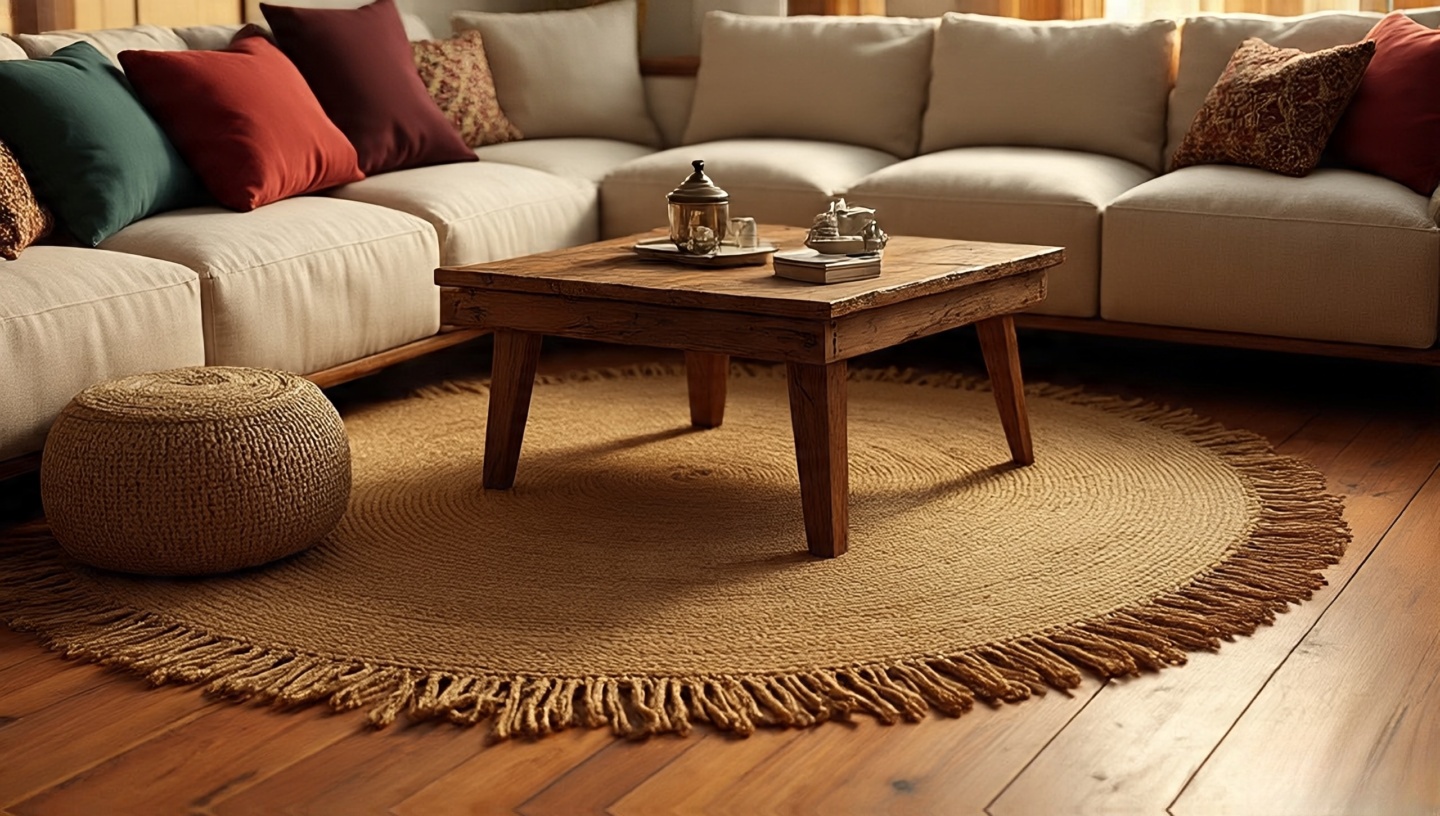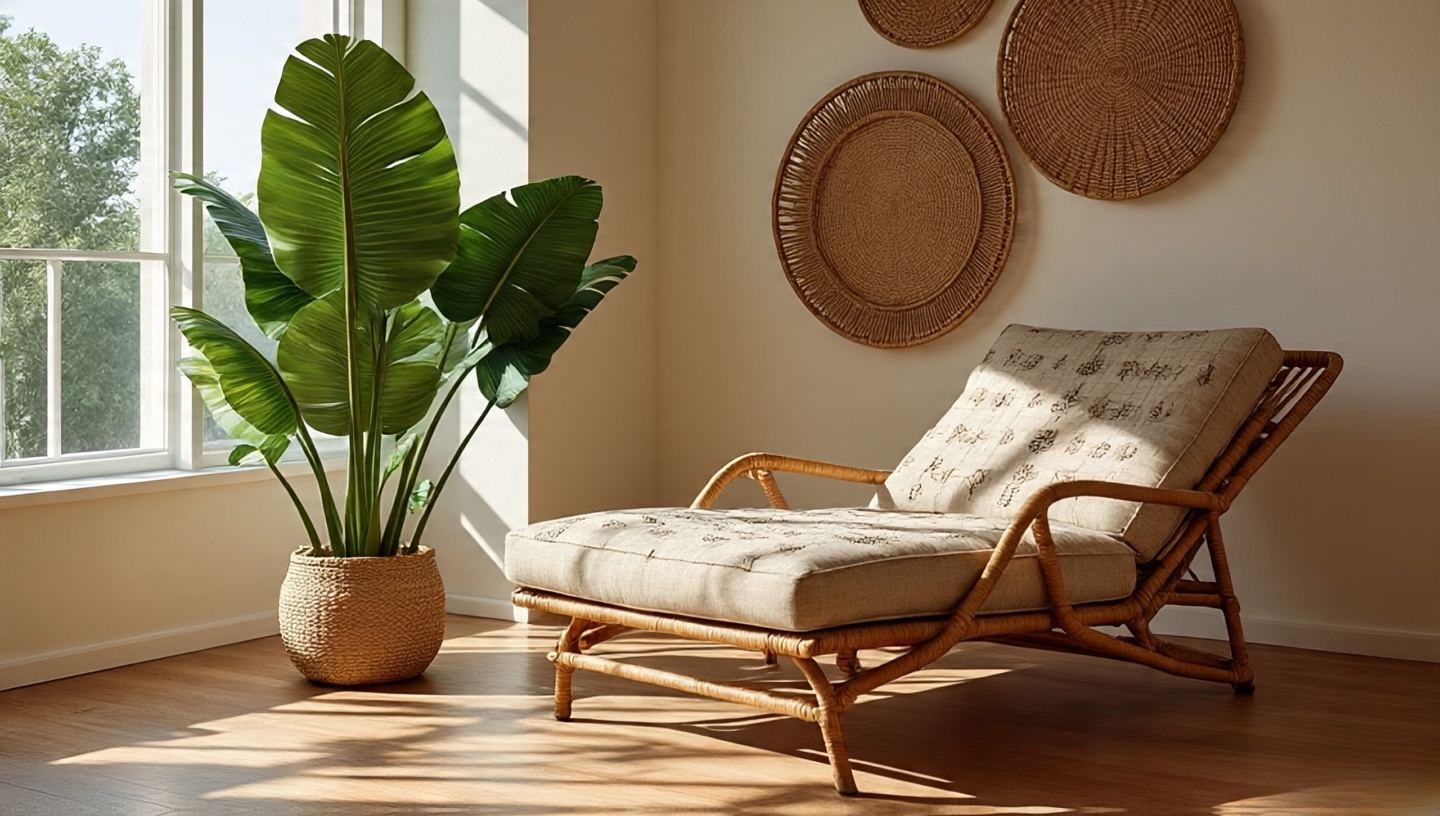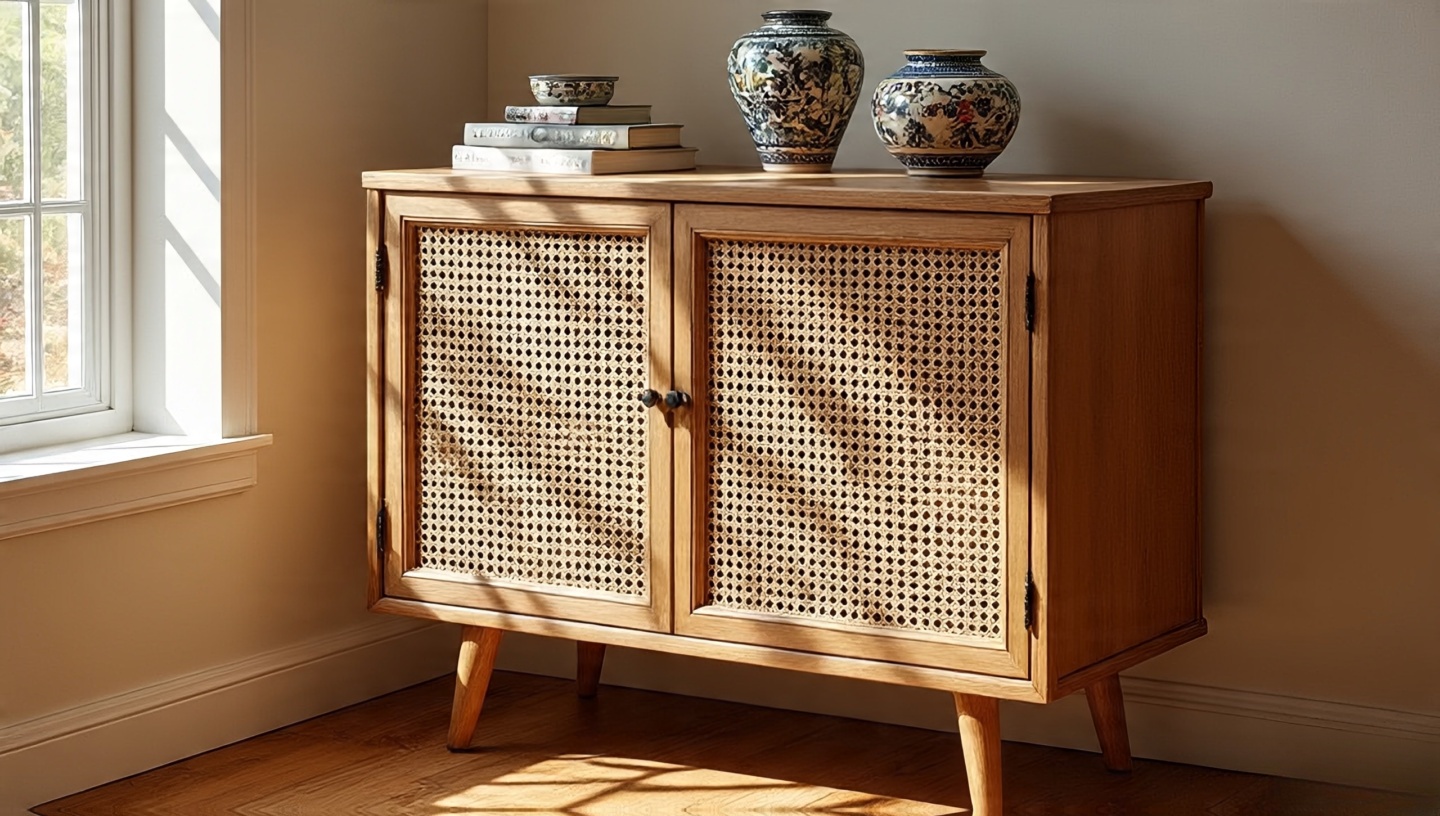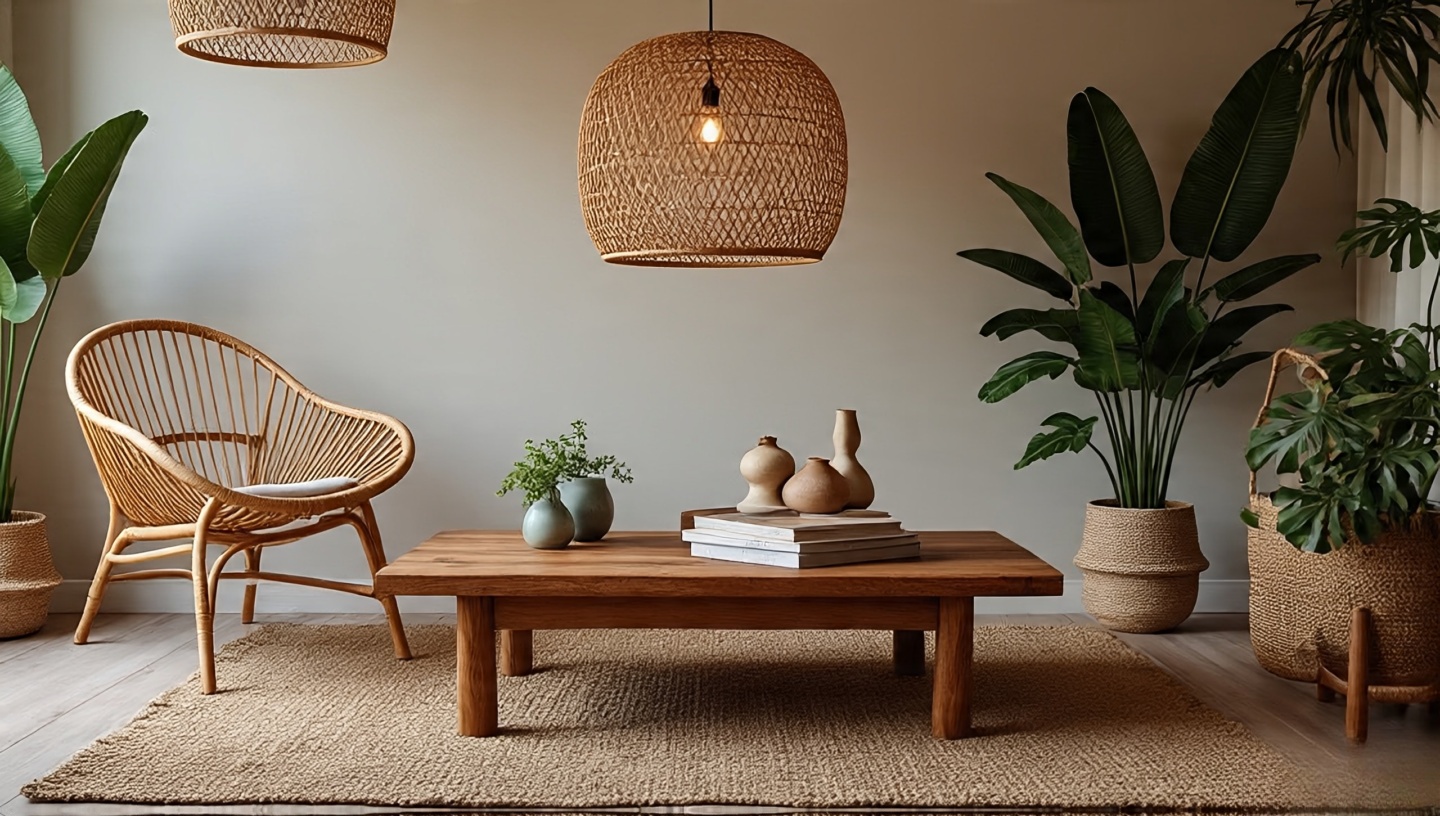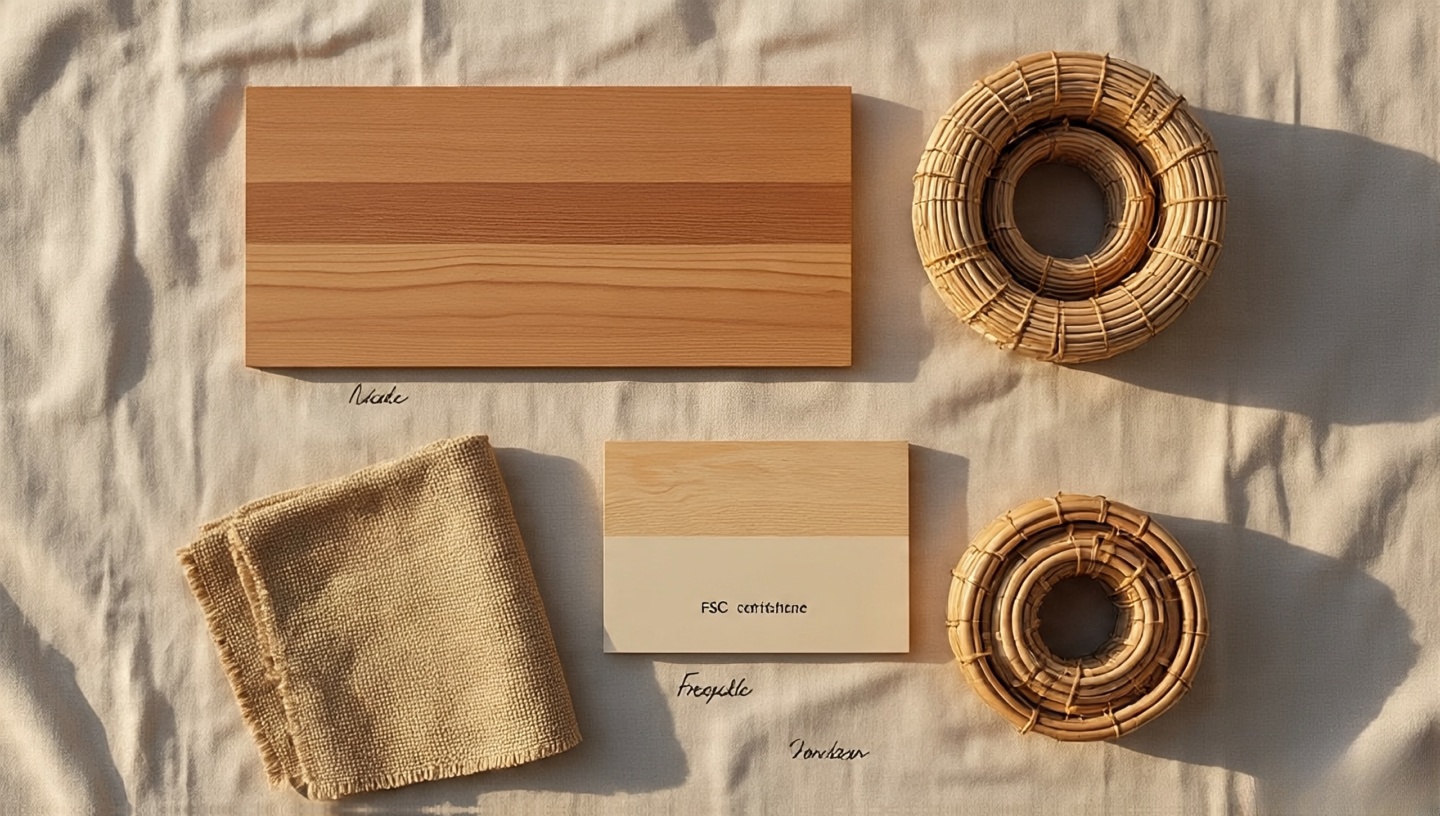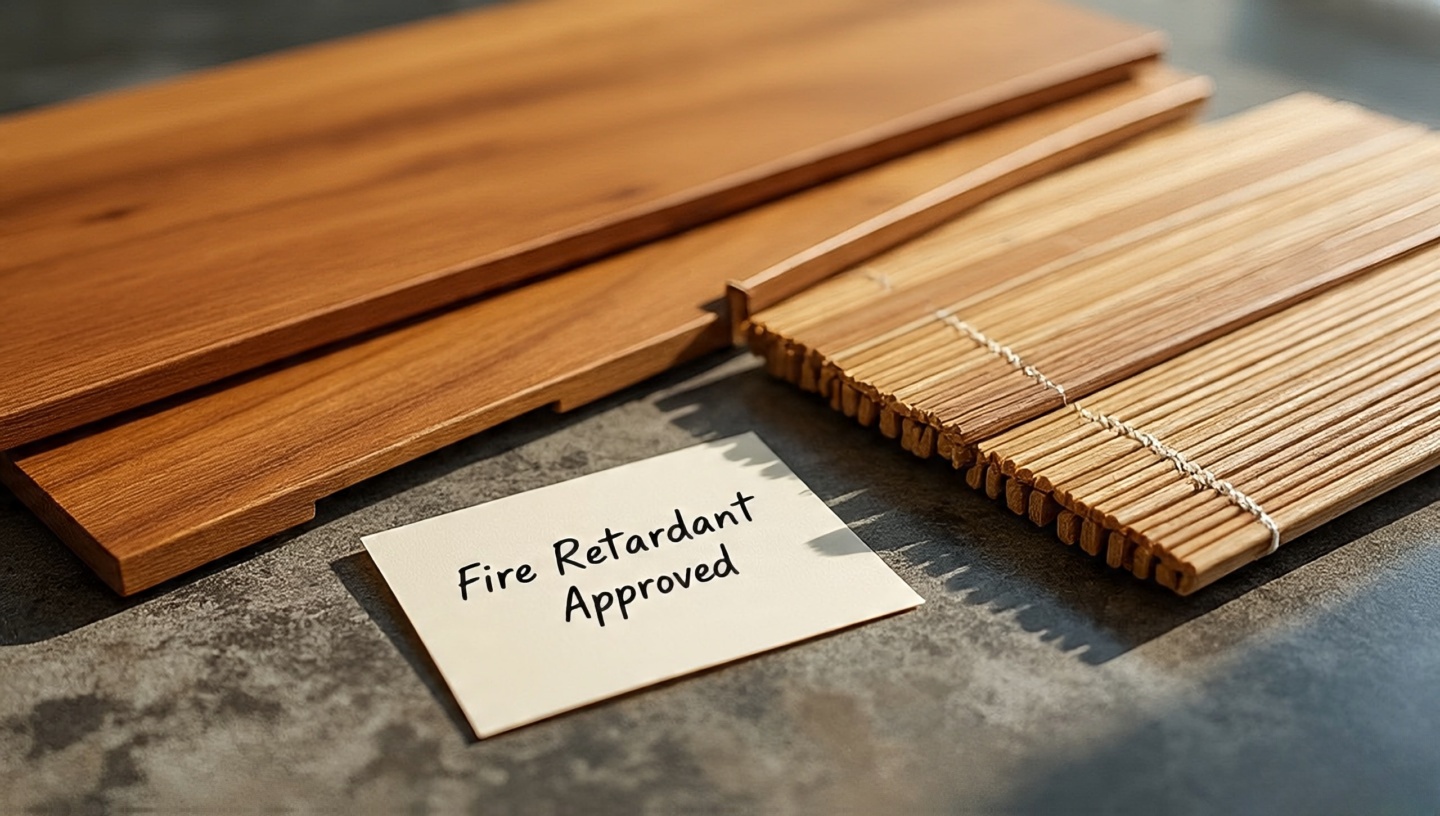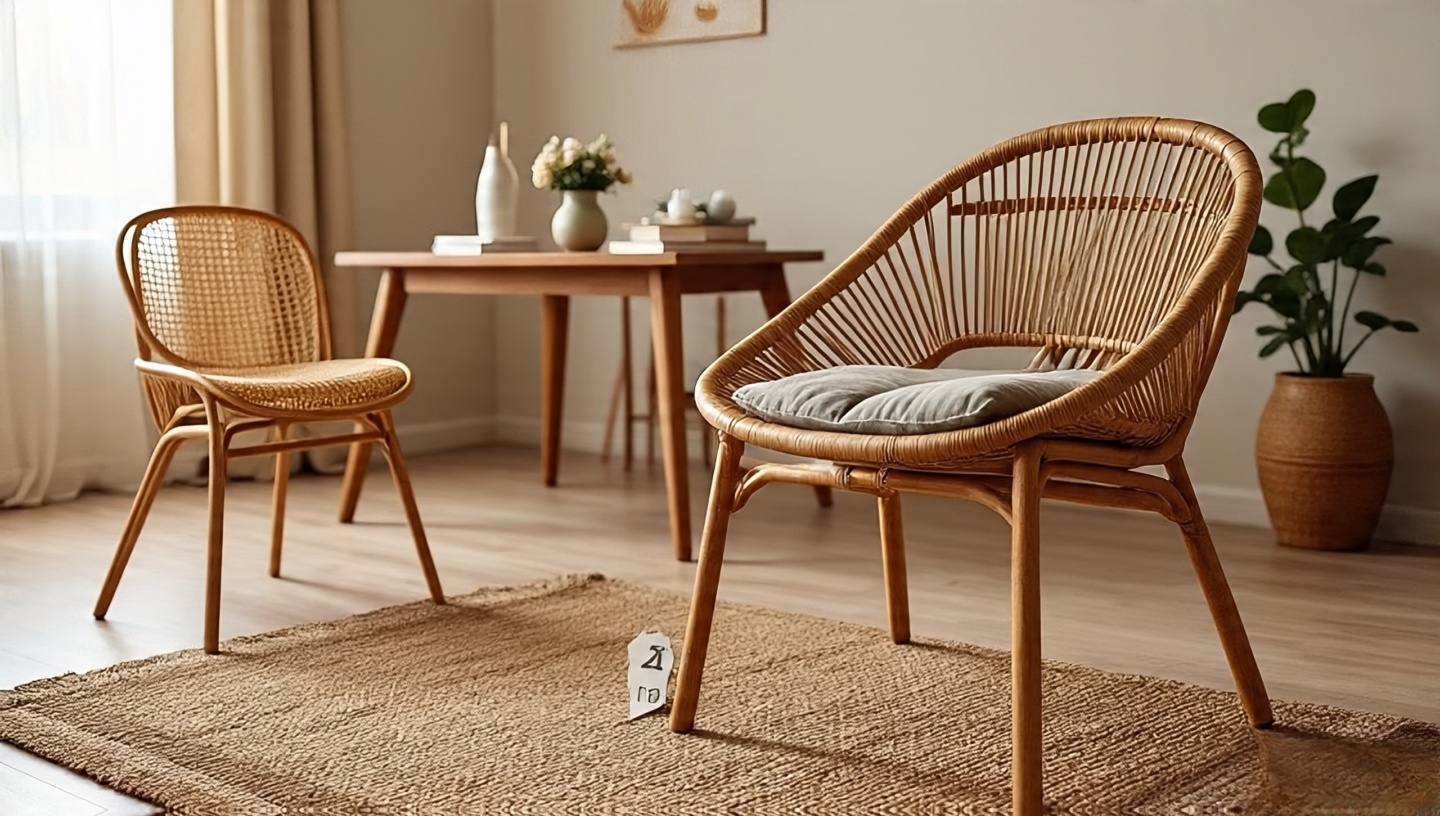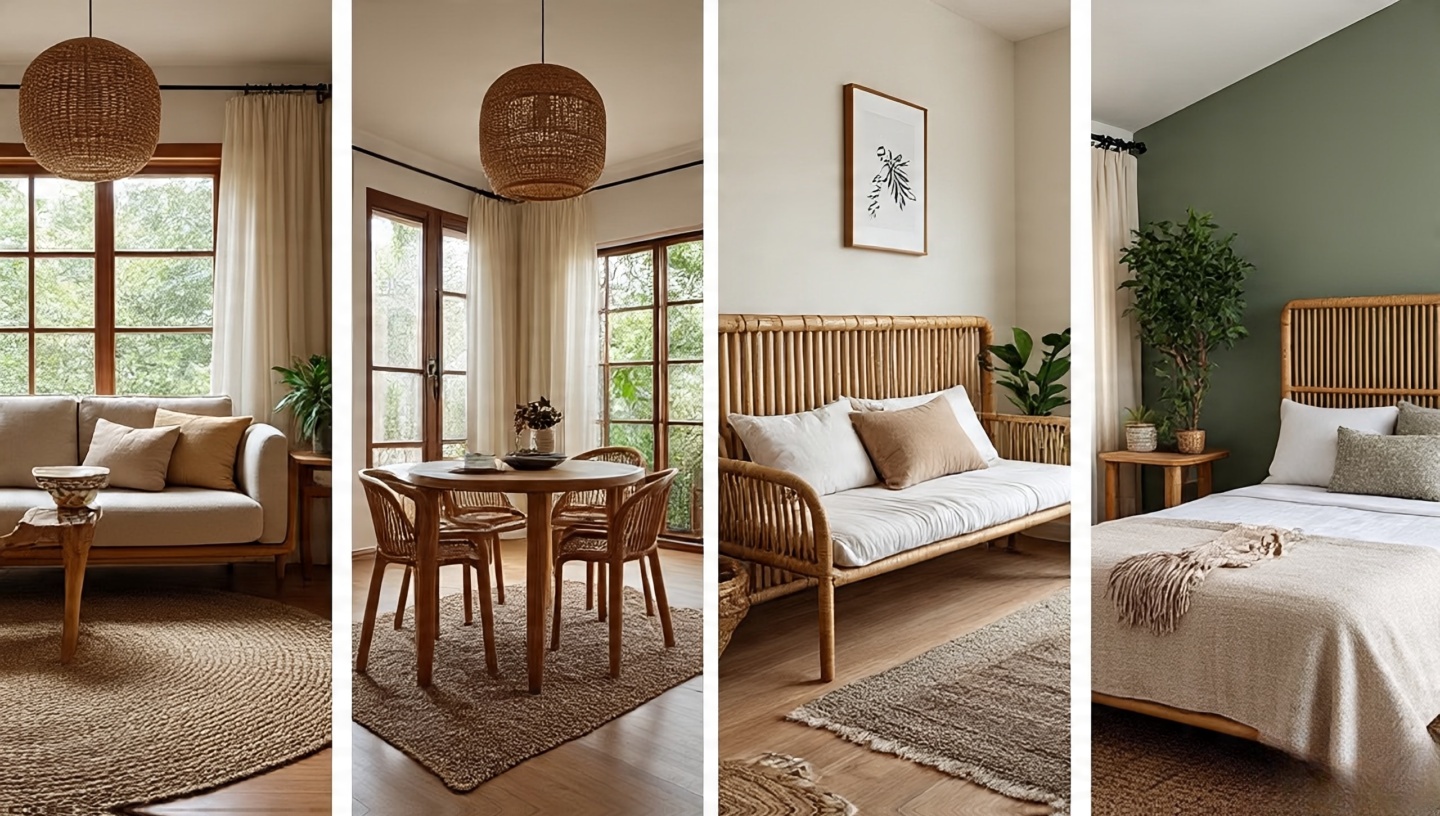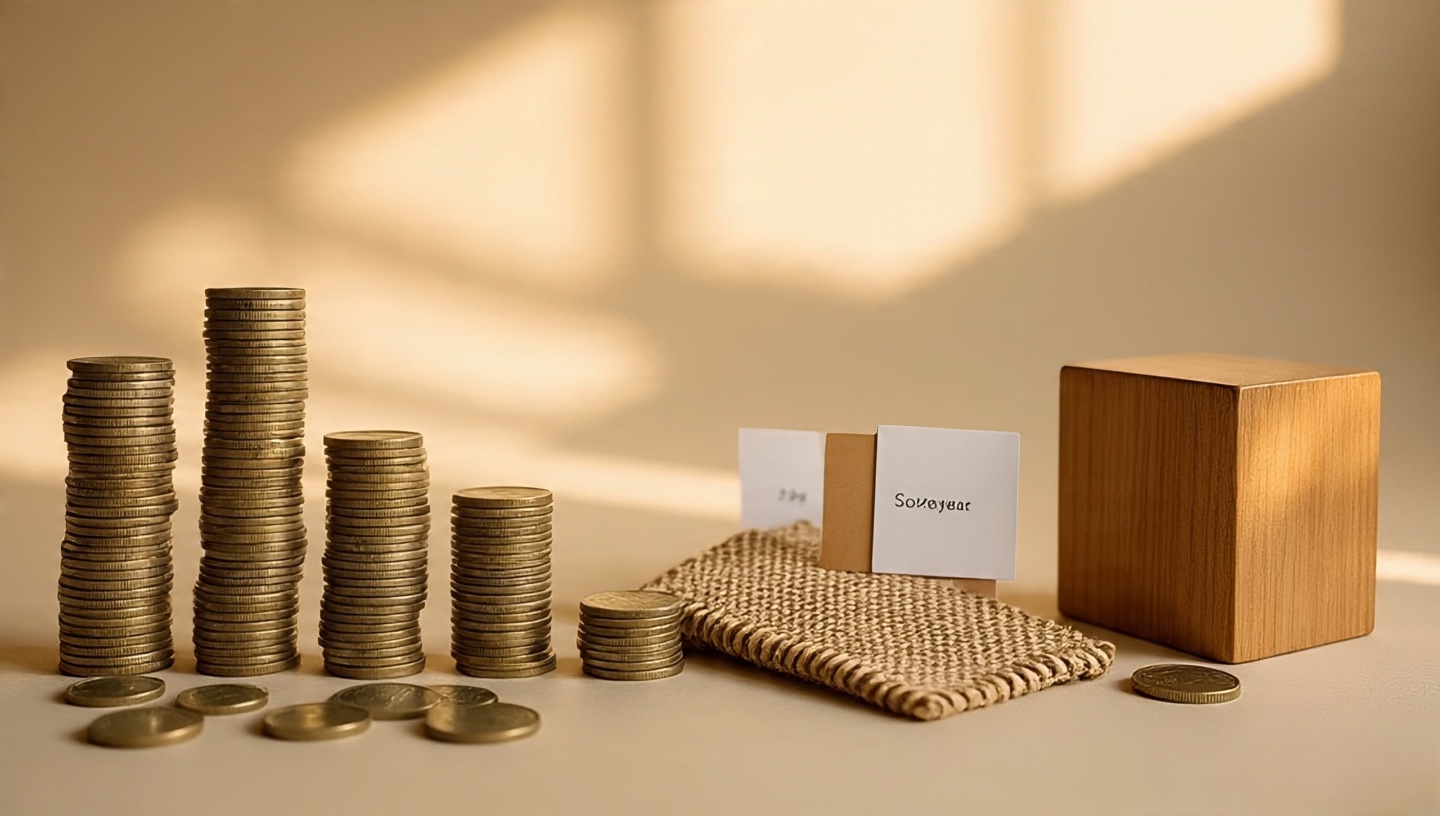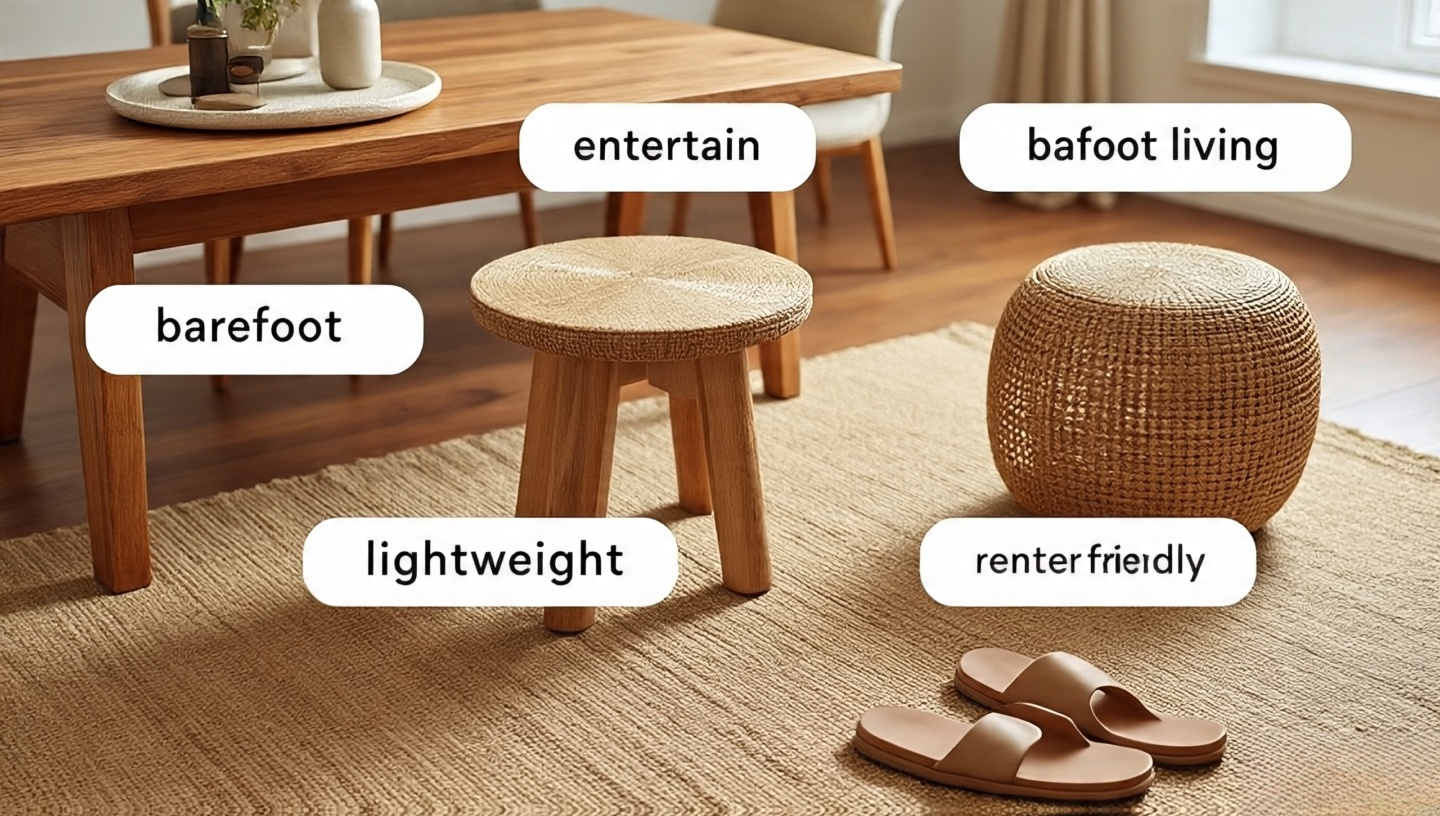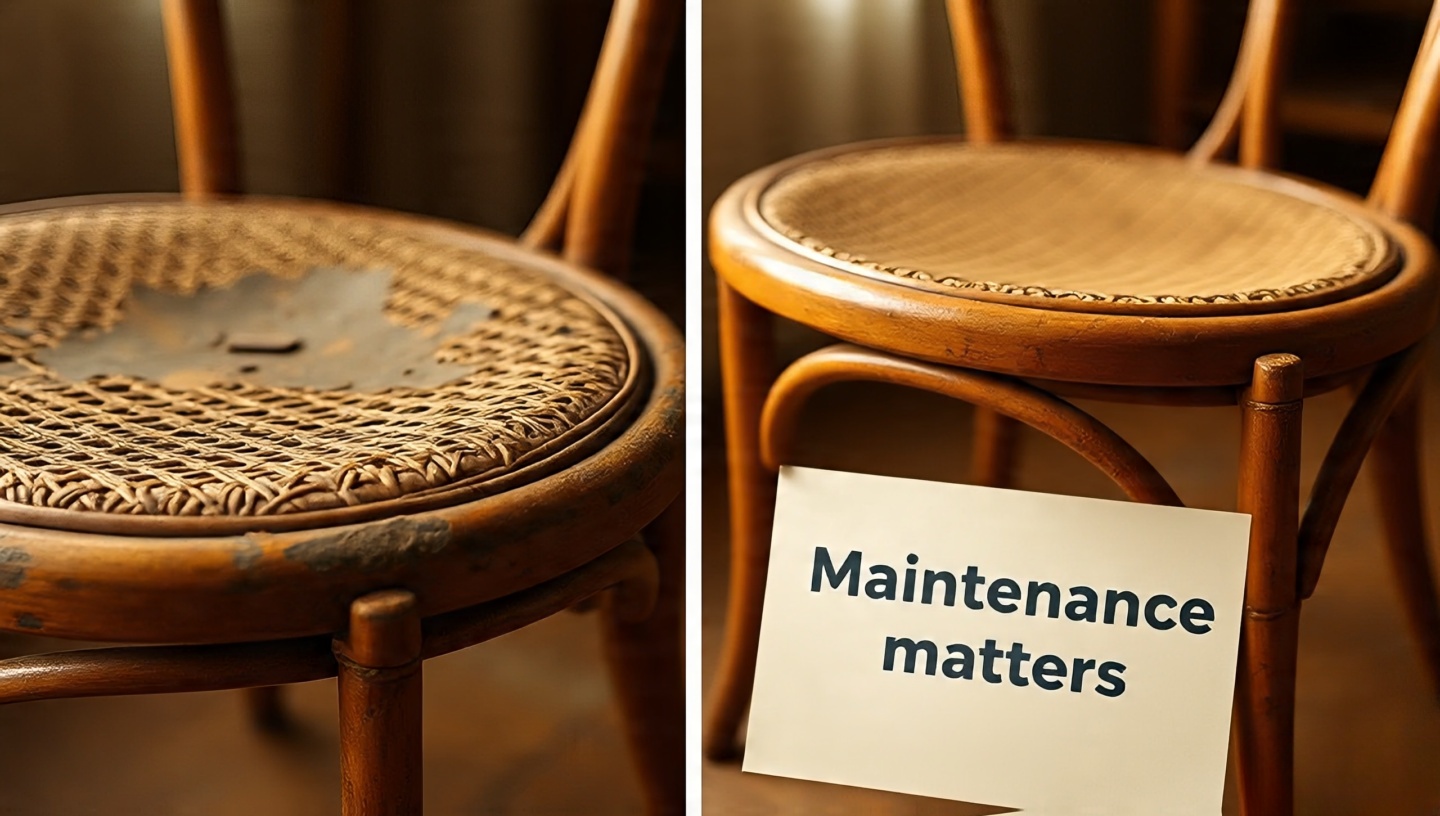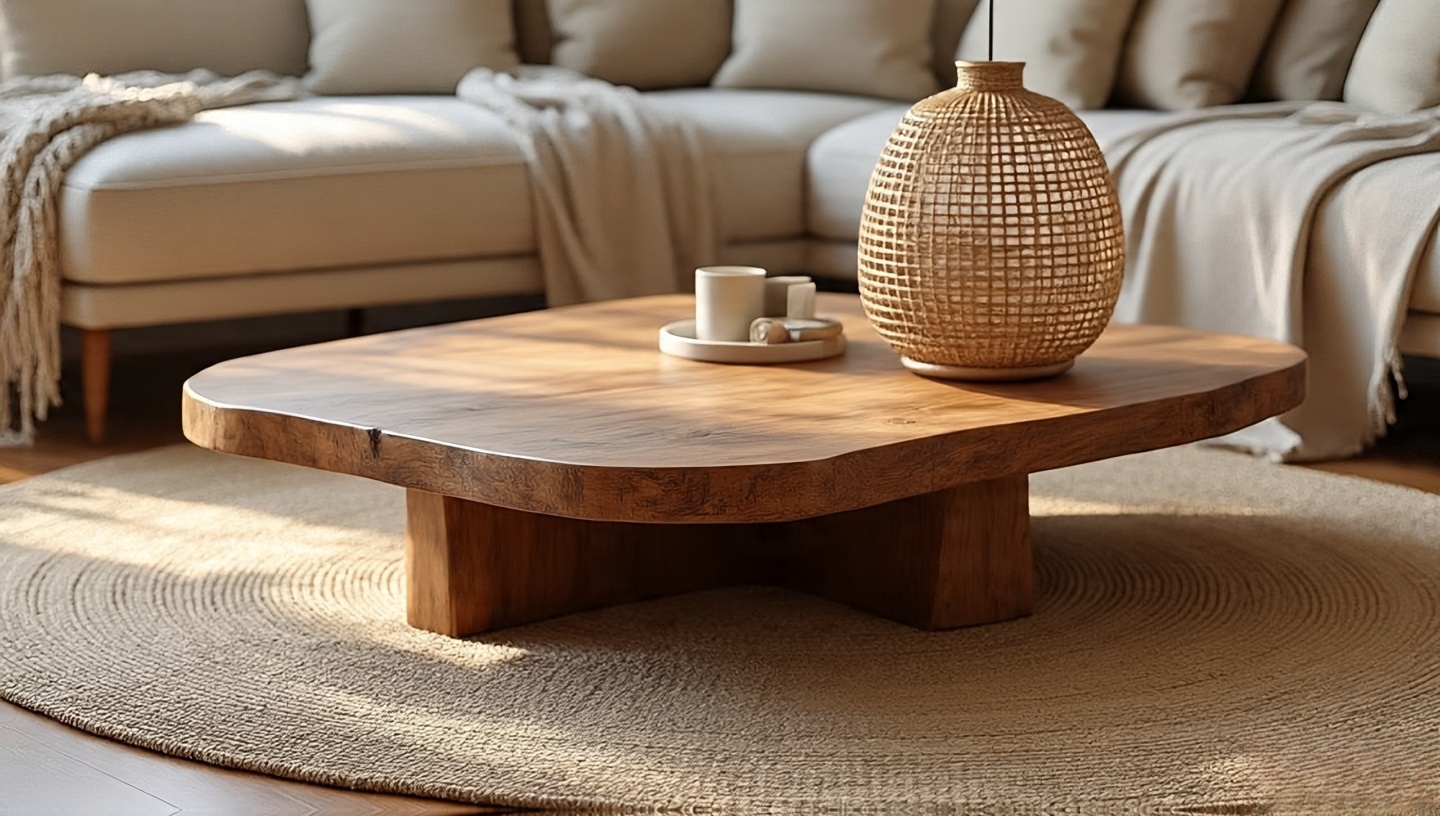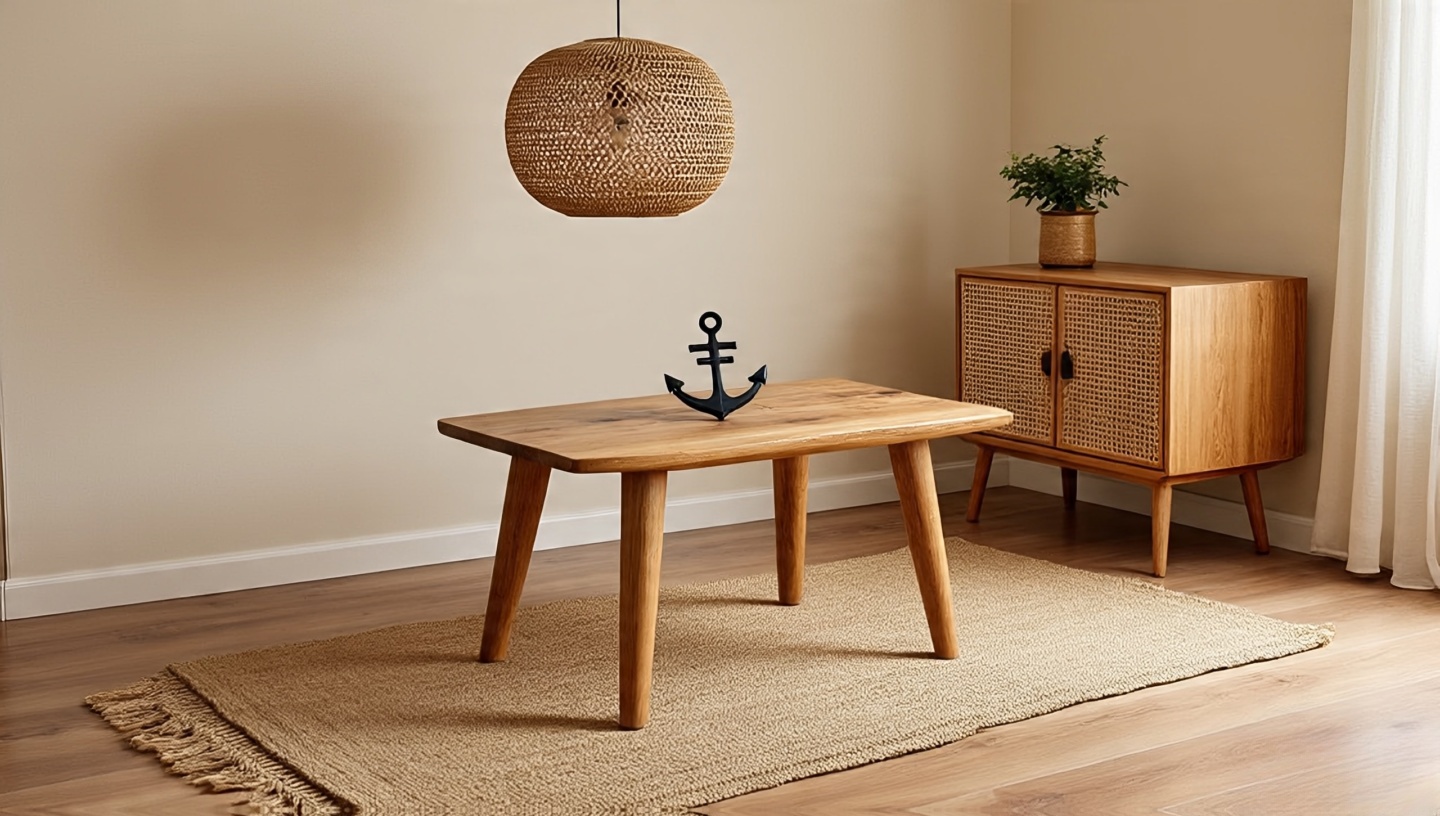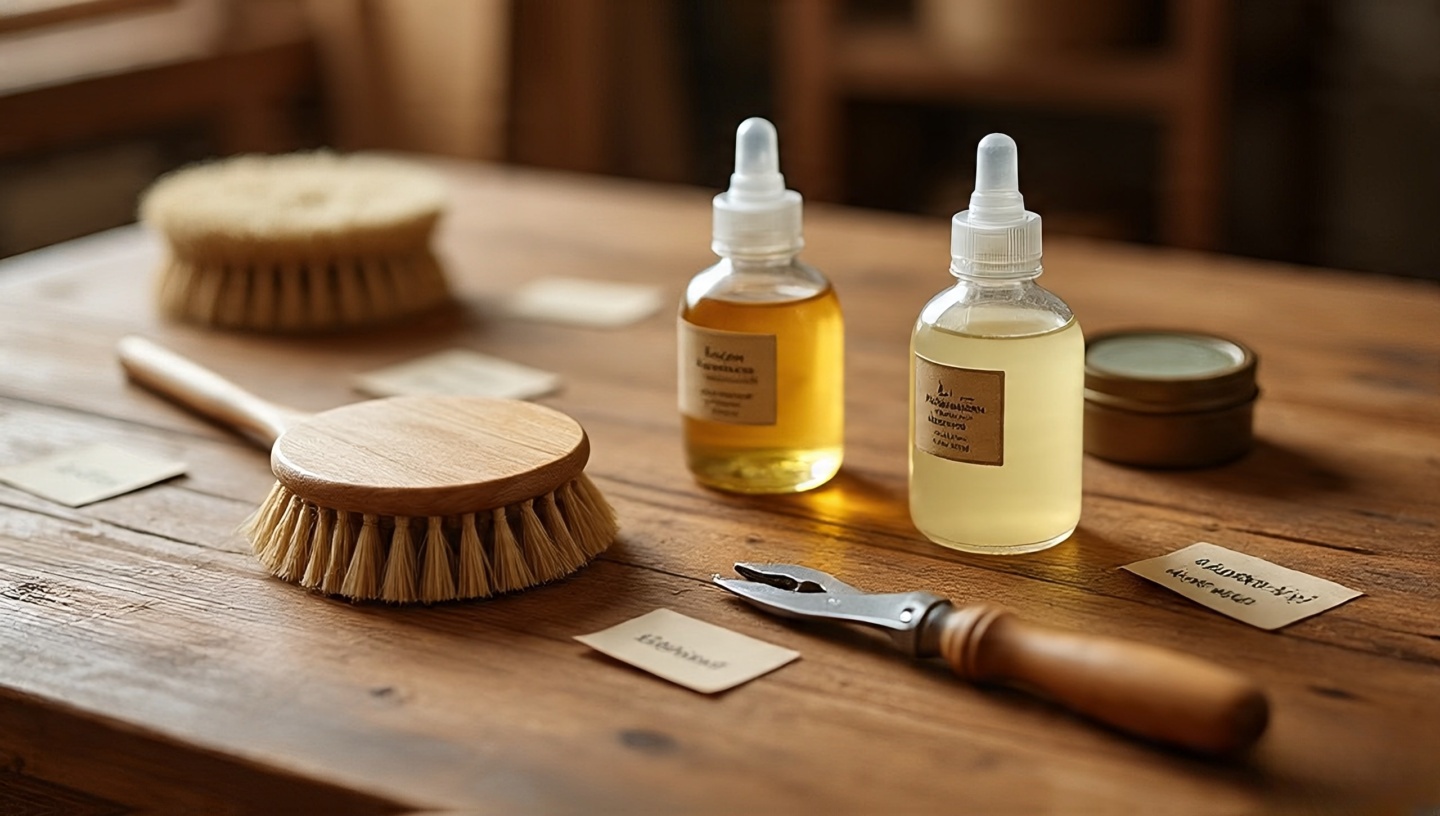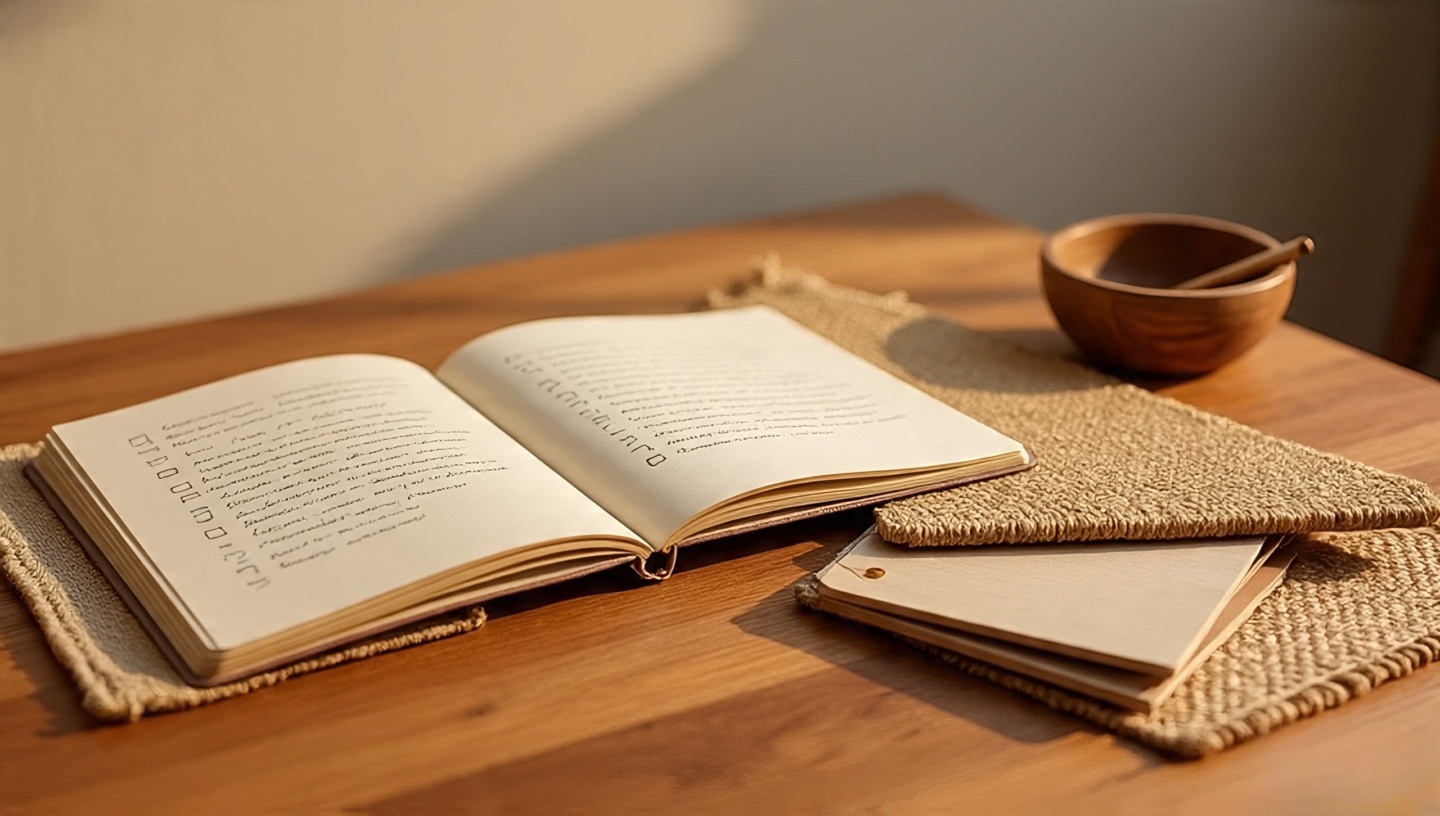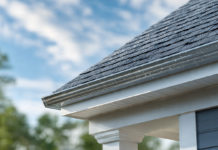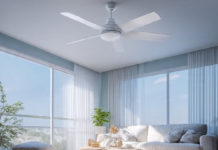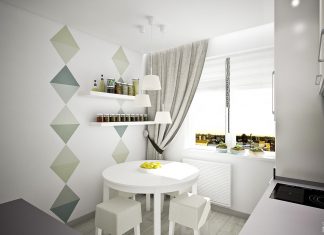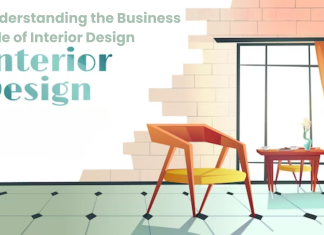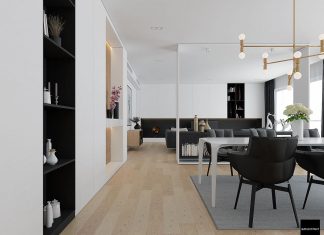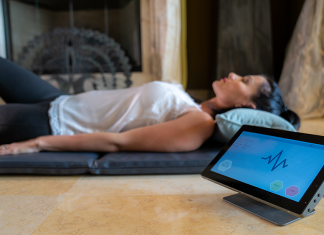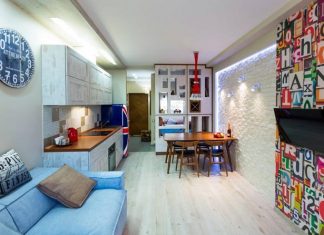Roohome.com – People often think Boho interiors are about patterned pillows, bright rugs, or colorful souvenirs. But in truth, the heartbeat of Boho style lies in natural materials. They are the threads that hold everything together, whispering authenticity. Jute scratching under bare feet, rattan glowing golden in sunlight, cane filtering light like lace, and wood carrying its quiet strength. Without them, Boho becomes costume instead of lifestyle.
I’ve spent over three decades designing homes across different climates and cultures. And time and again, I’ve seen that spaces come alive not because of perfect symmetry or glossy finishes, but because of texture, imperfection, and honesty. This article is for homeowners, renters, and even design students who want to understand why natural materials matter and how to use them without falling into the common traps.
1. Why natural textures matter more than we admit
Years ago, I replaced a synthetic rug in my living room with a handwoven jute rug. Nothing else changed, yet the whole space shifted. Suddenly, the room breathed. The rough weave carried memories of countryside summers and barefoot mornings in Bali. This is what natural materials do: they don’t just decorate, they evoke.
Designer’s Note
In interiors with strong patterns, natural fibers like jute and cane calm the energy. They ground the room so it doesn’t become visual noise.
Image idea: close-up of a jute rug under a coffee table with a steaming cup of coffee resting on it, morning light streaming in (alt text: “jute rug under coffee table with warm morning light”).
2. Jute: raw, rustic, and tougher than it looks
- Where it works: Rugs, poufs, wall art, even lampshades.
- Dimensions & Clearances: For rugs, leave at least 18–24 inches of visible floor around edges in living rooms; 12 inches in bedrooms.
- Cost & Value: A quality 6×9 ft jute rug can range from $150–$350, and lasts 5–7 years under moderate wear.
Common mistake: Using jute outdoors
Fix: Jute is highly absorbent. If you want the same look outdoors, opt for polypropylene blends that mimic jute but withstand moisture.
Image idea: living room with a golden jute rug and jewel-toned pillows (alt text: “boho living room with jute rug and colorful accents”).
3. Rattan: the golden glow of casual elegance
Rattan has a unique ability to glow. When light hits, it scatters in warm, honeyed tones. It’s why vintage rattan pieces remain timeless.
Materials & Finishes
- Unfinished rattan: raw, rustic, needs occasional oiling.
- Varnished rattan: easier to clean but less organic in feel.
Common mistake: Overloading a room with rattan
Fix: Use rattan as an accent, not the whole orchestra. A chair, a pendant lamp, or a single side table is enough to set the tone.
Image idea: rattan lounge chair near a leafy indoor plant, sunlight casting woven shadows (alt text: “rattan chair with indoor plant and sunlight”).
4. Cane: lightweight, flexible, and a little romantic
Cane is more delicate than rattan, but it offers a charm that’s hard to replicate. The perforated weave filters light, creating dotted patterns across floors and walls.
Durability & Maintenance
- Average lifespan: 10–15 years with gentle use.
- Keep humidity balanced. Spritz with water to prevent sagging.
Common mistake: Ignoring tension
Fix: If cane seats sag, don’t discard them. Re-wetting and re-tightening often restores the weave.
Image idea: cane cabinet doors with sunlight filtering through (alt text: “cane cabinet with sunlight patterns on the floor”).
5. Wood: the anchor of authenticity
Wood is the structural soul of Boho decor. Its weight, smell, and grain tell stories of forests, time, and craftsmanship.
Materials & Finishes
- Teak: Dense, water-resistant, best for humid climates.
- Oak: Durable, classic, ideal for heavy-use furniture.
- Mango wood: Affordable, sustainable, with rich grains.
Common mistake: Over-sanding reclaimed wood
Fix: Leave the imperfections. Knots and scratches are part of its character.
6. Mixing them all without creating chaos
Layering is beautiful, but too much creates noise. I teach a simple “3-anchor rule”: choose one grounding piece (wooden table), one textural base (jute rug), and one playful accent (rattan or cane chair).
Image idea: living room showing a wooden coffee table, jute rug, and rattan chair balanced together (alt text: “balanced boho living room with wood, jute, and rattan”).
7. Sustainability and ethical choices
As architects, we are responsible for material lifecycles. FSC-certified wood, recycled rattan, and fair-trade jute are investments in the planet as much as in your home. Read more on sustainable decor here.
8. Climate and code considerations
- In humid climates: stick with teak or bamboo; avoid untreated jute.
- In dry climates: humidify cane and rattan periodically to avoid cracking.
- Fire codes: untreated jute and cane are flammable. Always check local code for commercial use.
9. Cost framework: budgeting natural materials
Budgeting isn’t just about purchase it’s about lifecycle cost. A $200 jute rug replaced every 5 years may cost more than a $500 wool rug that lasts 20.
| Material | Entry-level | Mid-range | Premium |
|---|---|---|---|
| Jute rug (6×9) | $120 | $250 | $500+ |
| Rattan chair | $150 | $300 | $800+ |
| Cane-back dining chair | $200 | $400 | $1000+ |
| Wood dining table | $600 | $1200 | $3000+ |
10. Common mistakes and how to fix them
Mistake: Over-polishing wood
Fix: Use matte oils or wax to keep the organic feel. Glossy varnishes kill the soul of wood.
Mistake: Using synthetic blends as “natural”
Fix: Check labels. If you want authenticity, look for 100% natural fiber certification.
11. Decision matrix: which material for which room?
One of the questions I hear most often is: “Where should I actually use these materials?” The answer depends on the room’s function, climate, and traffic. Below is a quick matrix I’ve used in consultations:
| Room | Best Material | Why |
|---|---|---|
| Living Room | Jute rug + Wood table | Durability under moderate traffic, grounding warmth. |
| Dining Room | Wood table + Cane chairs | Wood anchors, cane adds comfort and texture. |
| Bedroom | Rattan headboard + Jute rug | Lightweight elegance + tactile comfort underfoot. |
| Patio/Outdoor | Teak or bamboo | Weather-resistant, sustainable for outdoor use. |
Designer’s tip: Avoid jute in bathrooms or kitchens it doesn’t forgive spills or moisture.
12. Lifecycle vs. upfront cost framework
Clients often compare price tags, but the smarter question is: “What’s the cost per year of use?” A $120 jute rug lasting 3 years costs $40/year. A $500 wool rug lasting 20 years costs $25/year. Suddenly, the premium option looks cheaper in the long run.
| Material | Average lifespan | Annualized cost (mid-range) |
|---|---|---|
| Jute | 3–5 years | $40–$70/year |
| Rattan | 10–15 years | $20–$30/year |
| Cane | 10–12 years | $25–$35/year |
| Wood (solid) | 30+ years | $15–$40/year |
Rule of thumb: Think in decades, not in shopping seasons.
13. Climate-based recommendations
Different climates punish different materials. Here’s a quick guide:
- Tropical & Humid: Favor teak, bamboo, and rattan. Avoid untreated jute (it molds quickly).
- Dry/Arid: Jute thrives here. Cane needs occasional misting to prevent cracking.
- Cold climates: Wood is king. Pair with layered textiles to offset its hardness.
Climate code note
Some municipalities require fire-retardant treatments for commercial spaces. Always confirm if your cane or jute products meet local codes before using them in cafes, hotels, or retail interiors.
14. Decision tree: which material fits your lifestyle?
When I guide clients, I often sketch this simple decision tree:
- Do you entertain often? → Choose wood as anchor (durable, repairable).
- Do you live barefoot? → Add a jute rug (tactile comfort).
- Do you want a lightweight, movable setup? → Go with rattan or cane (easy to shift, airy feel).
- Do you rent? → Invest in smaller accents like cane side tables or jute poufs; save wood investment for your permanent home.
15. Mistake-and-prevention framework
Mistake: Choosing beauty over durability
Prevention: Always check weight-bearing capacity. Cane chairs look delicate because they are. Don’t expect them to handle daily rough use.
Mistake: Ignoring maintenance cycles
Prevention: Schedule seasonal care. Oil wood once a year, spritz cane every 6 months, rotate jute rugs every 3 months to even out wear.
16. Mixing matrix: texture balancing
One of my go-to frameworks is a balance matrix. The goal: avoid monotony by mixing textures.
| Anchor | Base | Accent |
|---|---|---|
| Wood | Jute | Rattan lamp |
| Rattan | Cotton fabric | Wood side table |
| Cane | Wool rug | Wood shelves |
| Jute | Concrete floor | Rattan chair |
Designer’s note: Never let all three layers be woven textures you’ll lose hierarchy.
17. Performance vs. aesthetics grid
Every material lives somewhere between functional and emotional appeal. Plotting them helps clients choose wisely:
- Jute: High texture, medium durability, low maintenance.
- Rattan: Medium durability, medium comfort, high mood impact.
- Cane: Medium-low durability, high elegance, high light-play quality.
- Wood: High durability, high cost, timeless presence.
Tip: Anchor your big-ticket items in the upper-right (wood), then layer emotions with rattan or cane.
18. Installation and sequencing guide
- Step 1: Place your largest anchor (wooden table or bedframe).
- Step 2: Add the grounding layer (jute rug).
- Step 3: Introduce light-bending materials (rattan pendant, cane cabinet).
- Step 4: Accessorize with textiles or plants.
Sequencing matters. If you buy accents first, you risk “decorating around decoration,” which leads to clutter.
19. Long-term maintenance matrix
| Material | Seasonal Task | Annual Task |
|---|---|---|
| Jute | Rotate rug quarterly | Deep vacuum (no water) |
| Rattan | Dust weekly | Oil every 12 months |
| Cane | Mist lightly in dry months | Re-tighten or replace weave after 10 years |
| Wood | Wipe with damp cloth | Oil/wax once a year |
20. Decision checklist: before you buy
- Have I checked if this material fits my climate?
- Do I know the maintenance cycle, and can I commit to it?
- Is this piece an anchor, a base, or an accent?
- How long will it realistically last in my home?
- Does it pass the “touch test” do I actually enjoy how it feels?
Trust me, the last question matters more than you think. If you don’t love touching it, you’ll end up ignoring it.
Mini FAQ
- Can I mix cane and rattan in the same room? Yes. They’re related but distinct. Use rattan for structure, cane for detailing.
- How do I protect jute from stains? Apply a natural fiber protector spray; blot spills immediately.
- Is bamboo considered Boho? Absolutely. It’s sustainable, light, and works especially in tropical climates.
Bringing it all together
Boho interiors thrive not on perfection, but on collected authenticity. Natural materials age with you, absorbing life rather than resisting it. If you’re starting out, try one swap this week: a jute rug instead of synthetic, a rattan chair in a reading corner, or a wooden bowl on your table. Notice how it shifts the mood of your space. Chances are, you’ll feel it immediately a subtle reminder that home is not just visual, it’s sensory.
